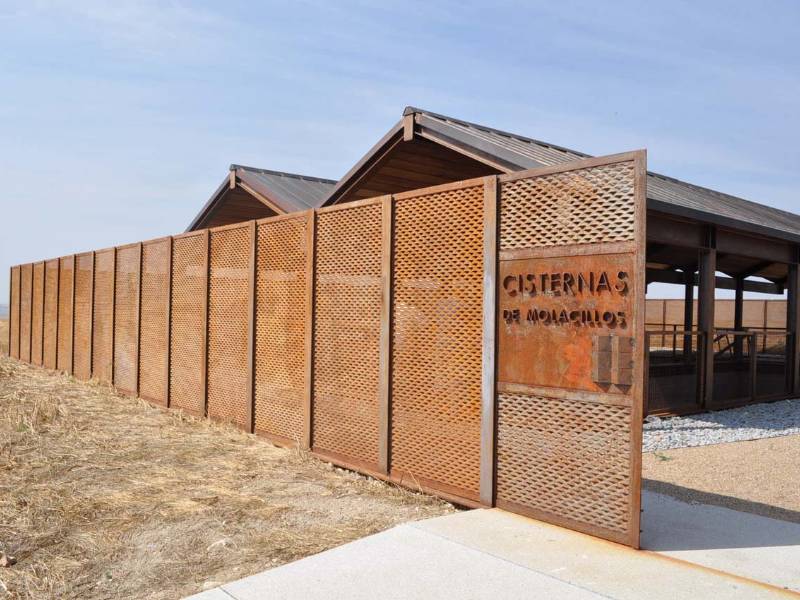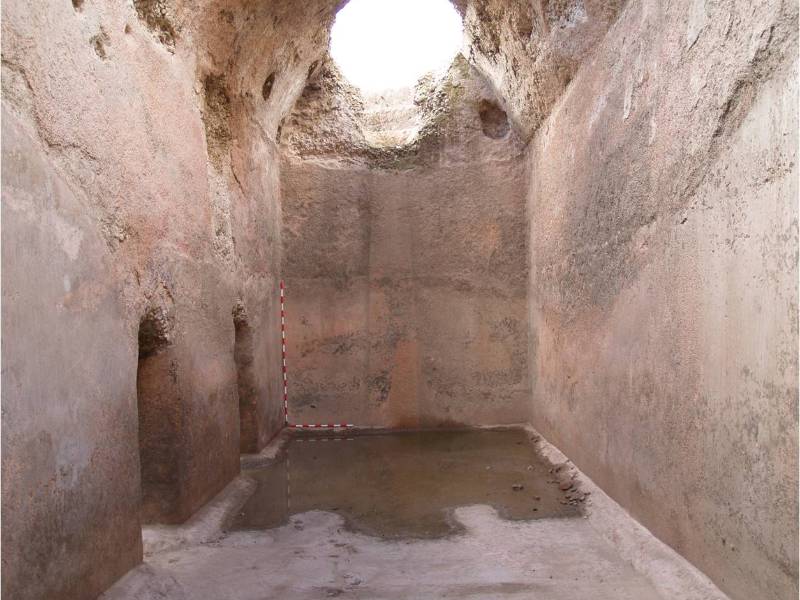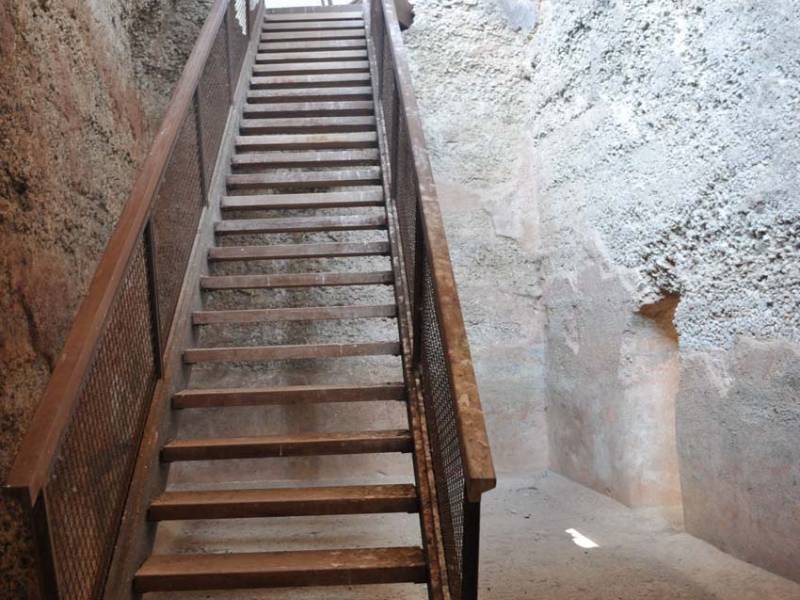Neolithic fortified settlement and Roman Cisterns of Teso Mora
Two large cisterns stand out, which probably served to supply a small garrison of the Roman army stationed in the vicinity. These two cisterns from Roman times, which used to store rainwater, have a capacity of 400,000 cubic meters, are rectangular in shape and are crowned by a barrel vault. Everything from the construction has been preserved except the covers. They are unique and exceptional in the Peninsula. Since its discovery it has been a benchmark in all publications and studies related to hydraulics in Roman times.
The place was frequented from the Chalcolithic era to the Bronze Age, between 2000 and 800 BC. C., becoming a permanent occupation town during the First Iron Age, dating from the 8th and 5th centuries BC. C., and housing, from the following century, an occupation of the Vacceas people. It was already depopulated somewhat before the change of era, perhaps due to the process of Roman conquest in the northern Meseta. The Roman hydraulic structures identified in the Teso de la Mora would correspond to the High Imperial Roman period. Additionally, numerous remains of populations from the Iron Age have been found.
Historical Data
- Architecture
- Archaeology site
- Construction
- Neolithic fortified settlement
- Historical Period
- Iron Age
- Roman
When to visit it?
Opening hours
- From January 1 to December 31:
- Every day: arrange a visit (Arrange a visit by calling 680 786 222 - 626 854 611 )
Taxes
Free (Give Donation)Observations: To see the church and the Roman cisterns, call the numbers: 680 786 222 - 626 854 611 Make a donation.
This portal is not responsible for possible changes in the schedules and rates reflected
Get to know the surroundings
Address and map location
- Postal address Molacillos. NaN. Zamora
- Web
Tourist information
Molacillos town hall
To know moreAddress and map location
- Postal address Plaza Arzobispo Mayoral, 1. municipality of Molacillos . Zamora
- Phones980 502 136
- Fax980 502 136
Zamora tourism office
Address and map location
- Postal address Avda. Principe de Asturias, 1. Zamora. NaN. Zamora
- Web
- Phones980 531 845
To know more



